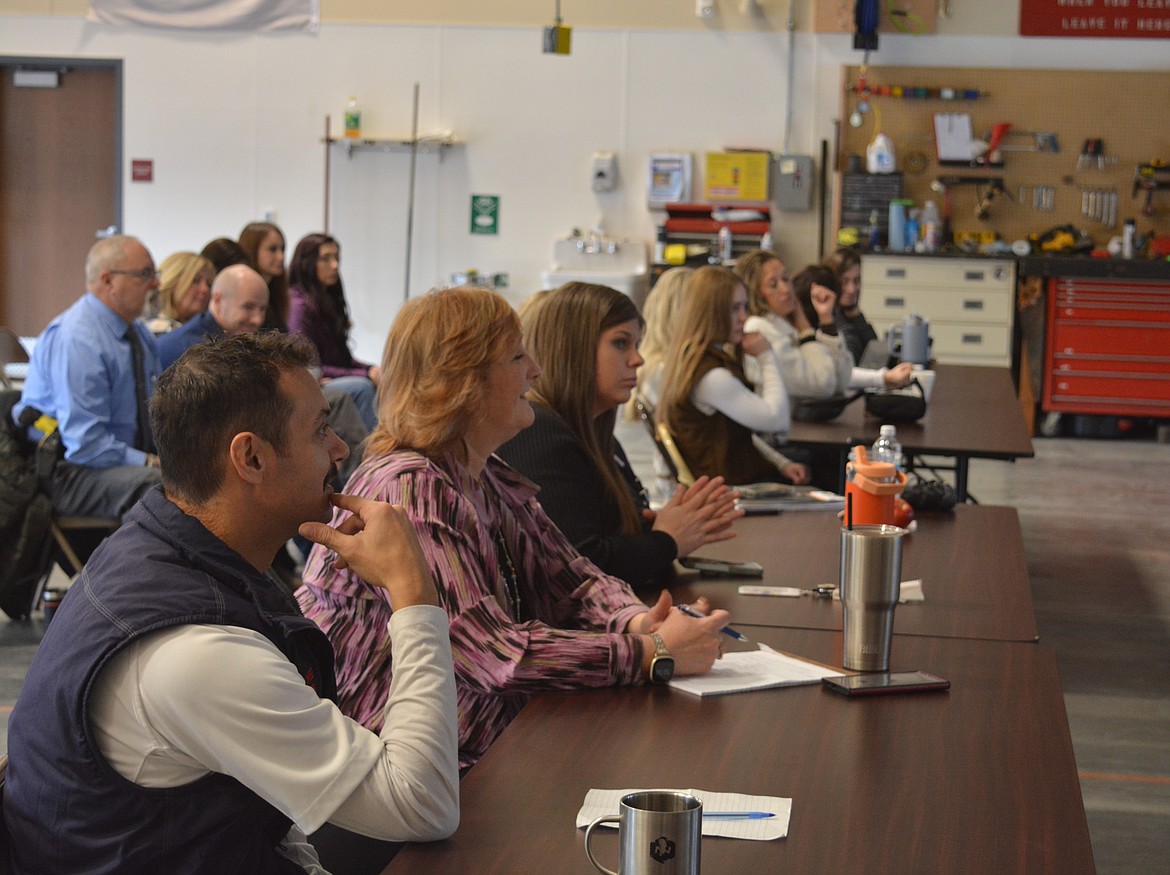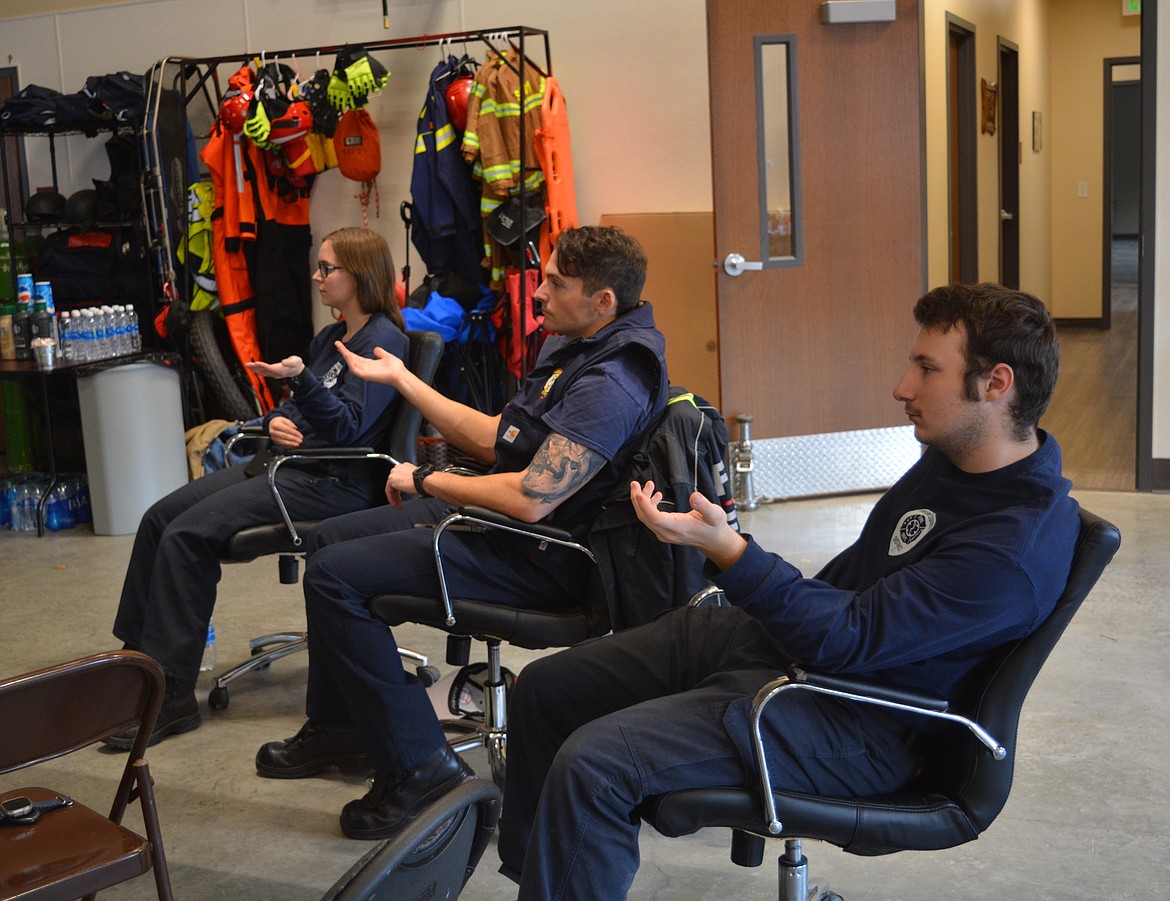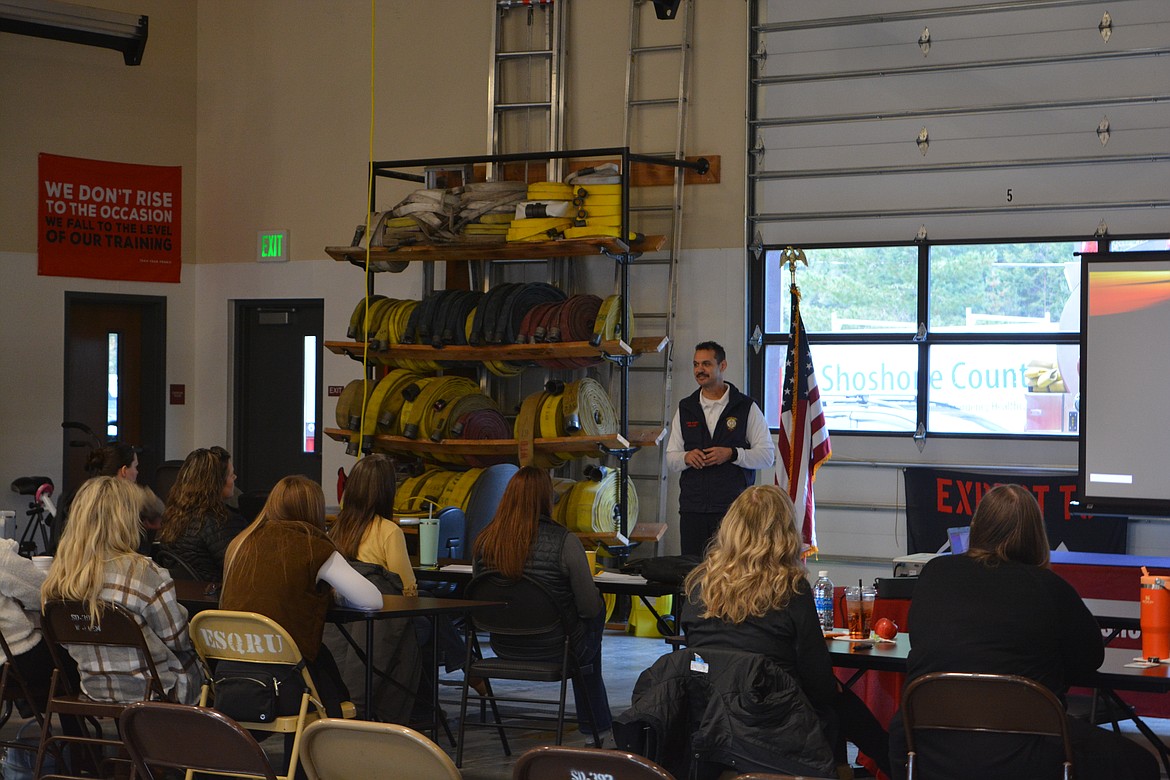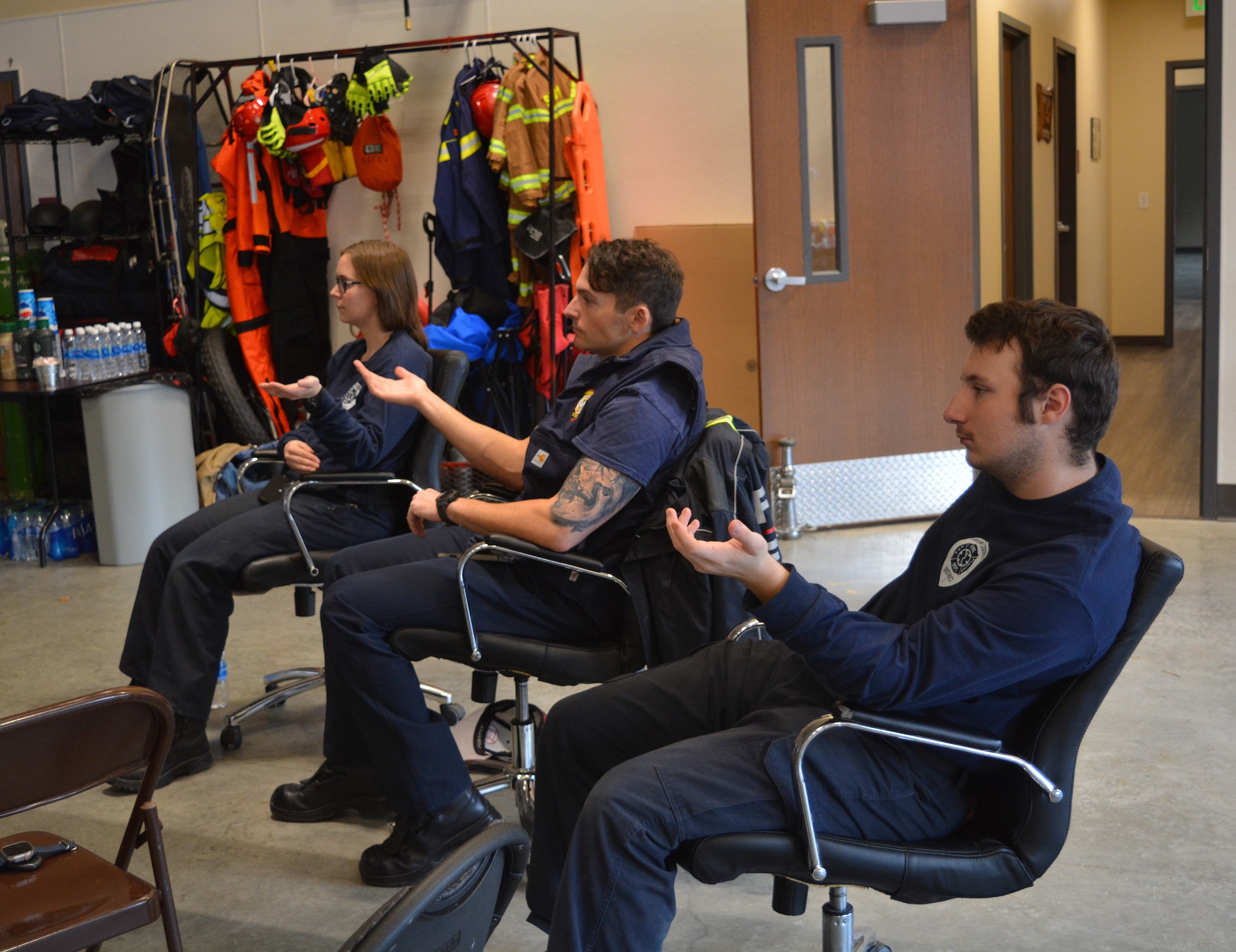'We’re the fixers; we're the problem solvers'
OSBURN — “What do you say to someone with depression or PTSD? The same thing you would to a person with a torn rotator cuff. How are you holding up and what can I do?” psychologist Christen Kishel said Thursday at Shoshone County Fire District No. 1 station.
Chief John Miller of Shoshone Fire District No. 1 said that this is the third year Kishel has brought trauma and burnout training to Shoshone County from Spokane. The training is especially geared toward first responders and breaks down the science of why our bodies tend to fight, freeze, fawn or flee when we’re under a high level of stress.
“Every call you go to, you put a rock in your backpack. It’s about how you’re going to unload those rocks before you’re overloaded,” Miller said.
By better understanding why our bodies react the way they do, it’s easier to frame these reactions logically and think through small ways we can better act under pressure.
One of the biggest barriers to people seeking help after trauma is that first responders especially can come from a culture of “don’t feel.”
Fighting against this stigma and dealing with the aftermath following a stressful incident isn’t something someone should be carrying alone. Because first responders spend so much time together, there are likely small tells when their sense of balance is becoming off kilter.
“Knowing when people are off of their baseline is a critical piece of peer support. Reach out to people instead of expecting them to reach in,” Kishel said.
Stress serves an important purpose in the body as a motivator, but the concern is that with too much to handle, it can also build up and cross over into distress instead.
In the Silver Valley in mid-September, events caused some reflection when calls came in faster than emergency responders could recover from. Between a head-on collision, structure fires, vehicle crashes, a shooting, and life-threatening medical crisis, Shoshone County’s EMS crews and law enforcement agencies were being stretched thin.
For probationary firefighter Averie Kinsey, watching her crew at Fire District No. 2 use it as a time to get the flow of operations even tighter inspired her to do more to grow in her role.
“I just know that those calls have sparked something in my shift because it always shows things that can be improved. Having a crazy two weeks, it brought up a lot of areas where our crews come together,” Kinsey said.
Fire District No. 2 Chief Scott Dietrich said that those critical times tend to bring the family aspect out of the team. While everyone is first and foremost responsible for themselves, looking to their teammate is just as important to keeping everyone healthy and in step with one another.
“The culture of the fire service around these events is changing. It was once a sign of weakness for a firefighter to show emotion or to be affected by stressful incidents. This has been proven to be harmful to the mental health of the firefighters and this is represented by the high rate of suicide by firefighters. We now encourage the firefighters to talk to someone about how they are feeling and seek help whenever they feel they need it,” Dietrich said.
Overcoming the stigma of receiving support when crises start overloading our systems is something that Kishel values just as much as staying connected to the people we love and trust instead of isolating. Knowing what your stress response looks like can go a long way to recognizing if you’re close to burnout.
“If we don’t take care of ourselves, we can’t take care of anybody else. We’re the fixers; we're the problem solvers, and that makes it harder to accept help,” Kishel said.
She told a story of a first responder who was shocked when he cried a single tear as a trauma response. She said she had to gently remind him that humans have tear ducts for a reason.
The amygdala is the danger center of the brain and without a lot of time to rest, the amygdala can grow over the years from an almond to walnut size. The amygdala doesn’t know the difference between feelings, experiences or what’s imagined. By practicing healthy coping techniques and reaching out for support from loved ones and coworkers when starting toward burnout, individuals can approach better resilience practices.
“Resilience is having the ability to move forward and function effectively. When you lose the ability to navigate on and off, that’s when you’re in trouble,” Kishel said.
Stress response tips:
If you notice you’re clenching your hands or tightening up your body, unclench and do deep breathing from your diaphragm.
Exercising can rid your body of some of the adrenaline that can ratchet up your anxiety.
Routines can impose a sense of order and control when we’re experiencing chaotic events.
If you notice your body is acting on a stress response, take the time to try and release the tension. When you find those quiet moments to decompress within tense episodes, you are training your neural pathways to have a healthier response when you’re stressed.





